
[204] Leucanthemum vulgare, Ox-eye Daisy
Introduction
Leucanthemum vulgare, the Ox-eye (or Oxeye) Daisy, is a wildflower in the Aster family easily confused with the cultivated Shasta Daisy, Leucanthemum x superbum.
The word Daisy on its own usually refers to [049] Bellis perennis, the Common Daisy; and many other species from dozens of genera in the Aster family are also called Daisies.
Taxonomy
Kingdom – Plants
Division – Vascular Plants
Class – Angiosperms (Flowering Plants)
Order – Asterales
Family – Asteraceae (About 30 000 species)
Subfamily – Asteroideae (About 20 000 species)
Supertribe – Asterodae
Tribe – Anthemideae (About 2 000 species)
Genus – Leucanthemum
Scientific Name – Leucanthemum vulgare
It has many scientific synonyms.
Other species and hybrids are cultivated, particularly many cultivars of Leucanthemum x superbum.
Name
Leuc-anthemum, from Ancient Greek, means white-flower.
Description
I will start this post with an extended disclaimer. There are at least fifty species of Leucanthemum, they all look very similar, many of them are cultivated, and there are many varieties and cultivars. So, I am not going to guarantee the species of any of my pictures.
I have to mention Leucanthemum x superbum, the Shasta Daisy, named after Mount Shasta in California because its petals were the colour of snow. (Yes, I know, it’s a ridiculous name, but so are many common names and almost all scientific names.) Back in 1890, Luther Burbank, an American horticulturalist crossed Leucanthemum vulgare with Leucanthemum maximum; this hybrid was crossed with Leucanthemum lacustre; and the result was crossed with Nipponanthemum nipponicum. The result was the Shasta Daisy, from which many popular cultivars have since been produced. It can escape and naturalize, where it looks very similar to the Ox-eye Daisy or other imported and naturalised species of Leucanthemum.
The best way to describe the Ox-eye Daisy is as a large daisy with a particularly large flower. It can grow to over half a metre in height and it produces up to three large daisy-like flowers. (Yes, of course, you know about Asters. They are not actually flowers, they are inflorescences with lots of florets.)

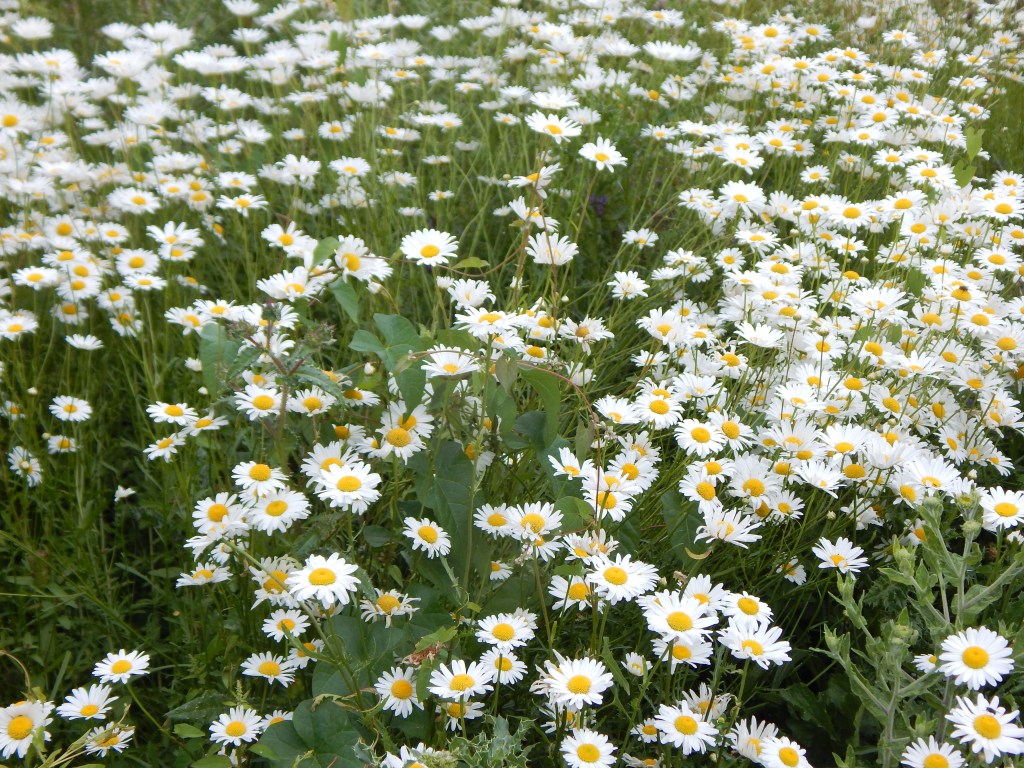



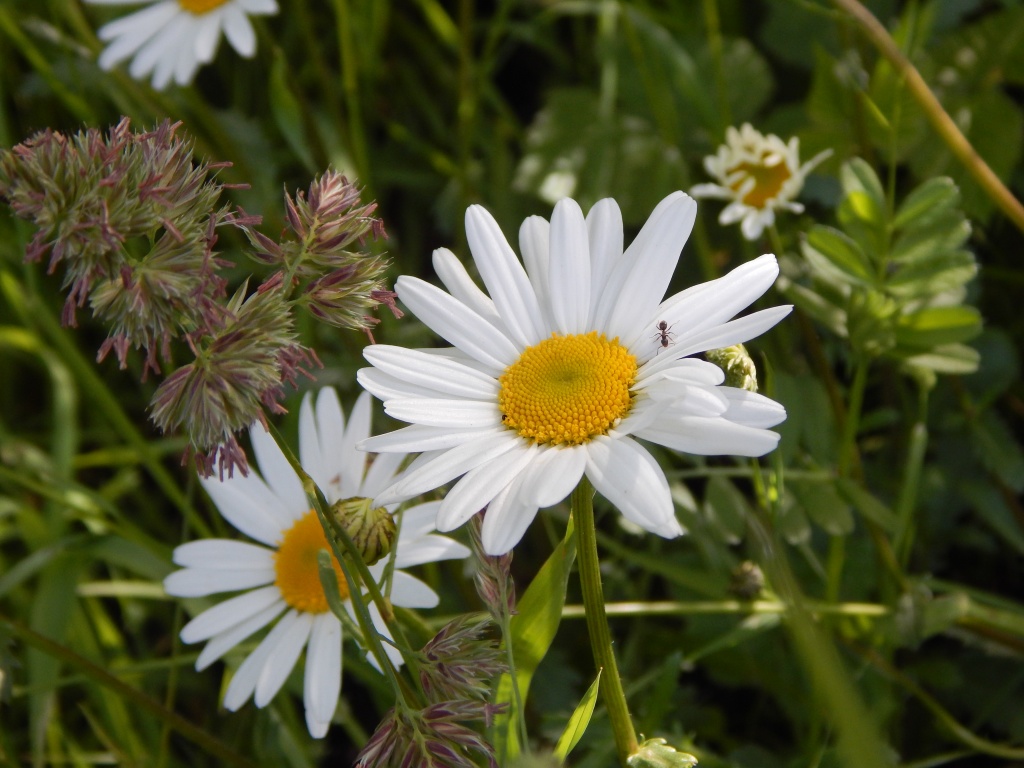
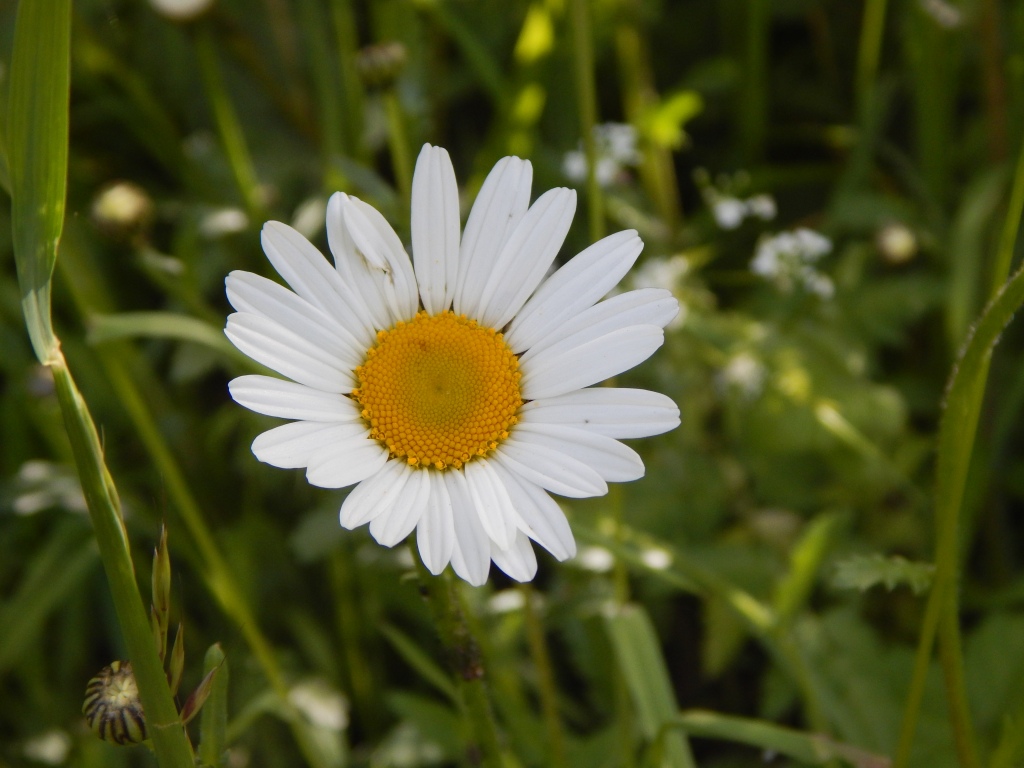
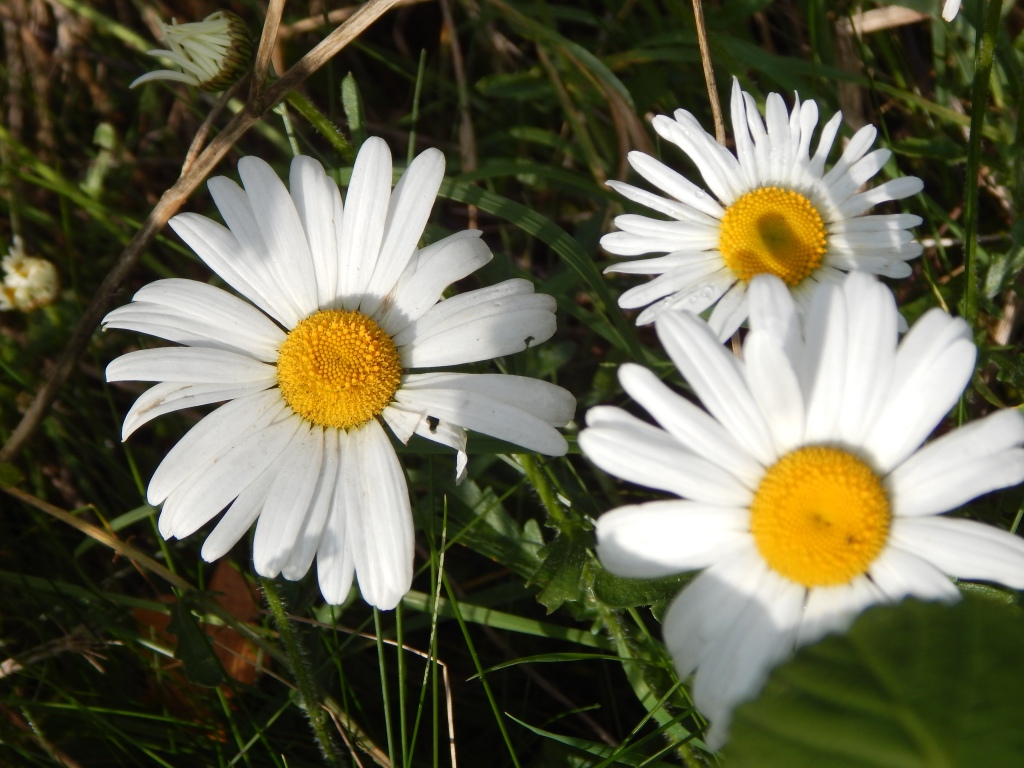
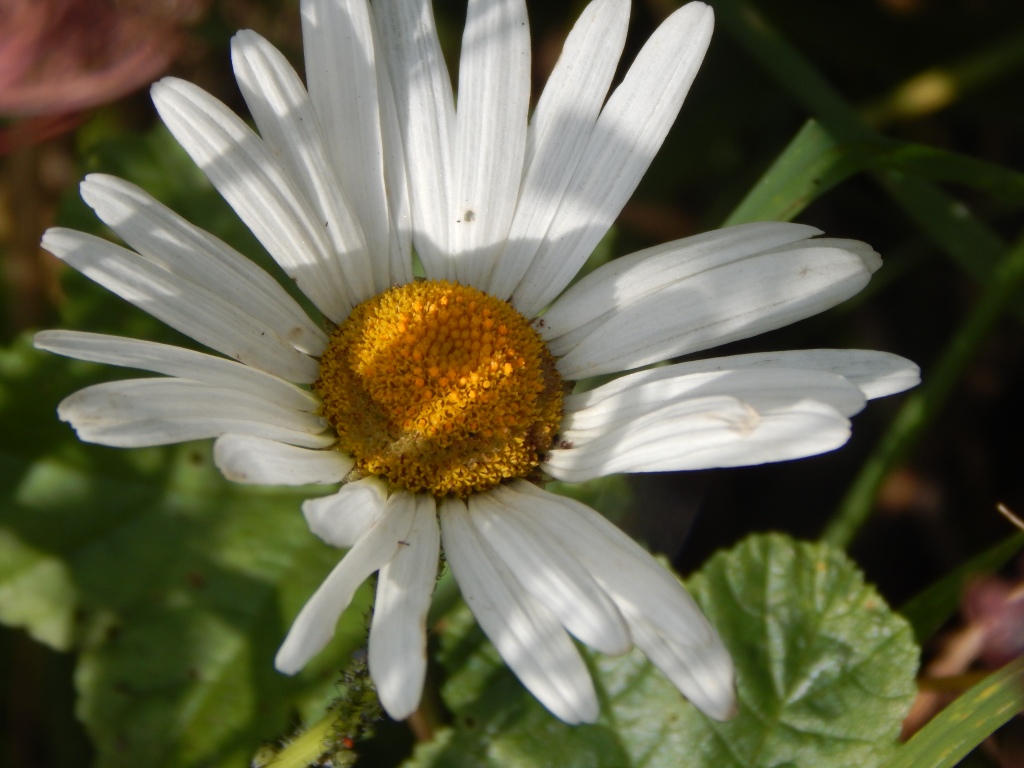
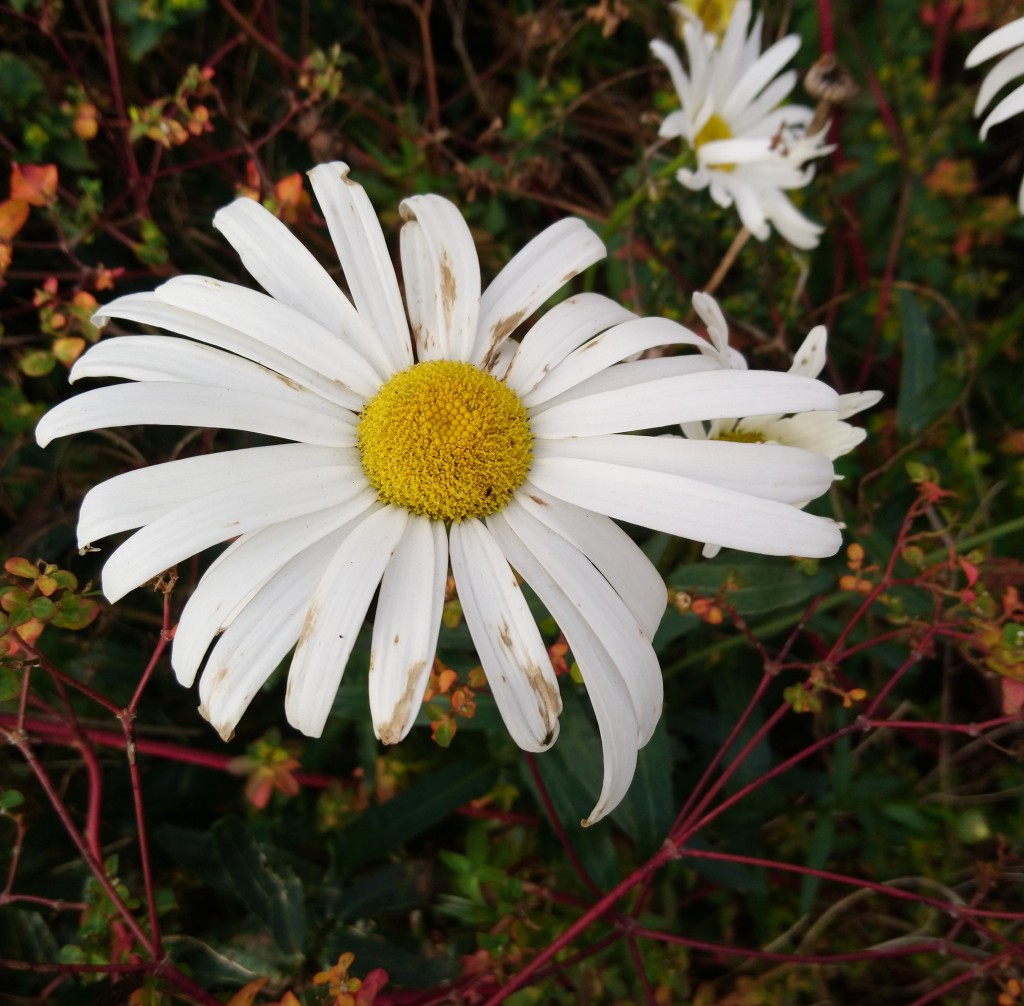
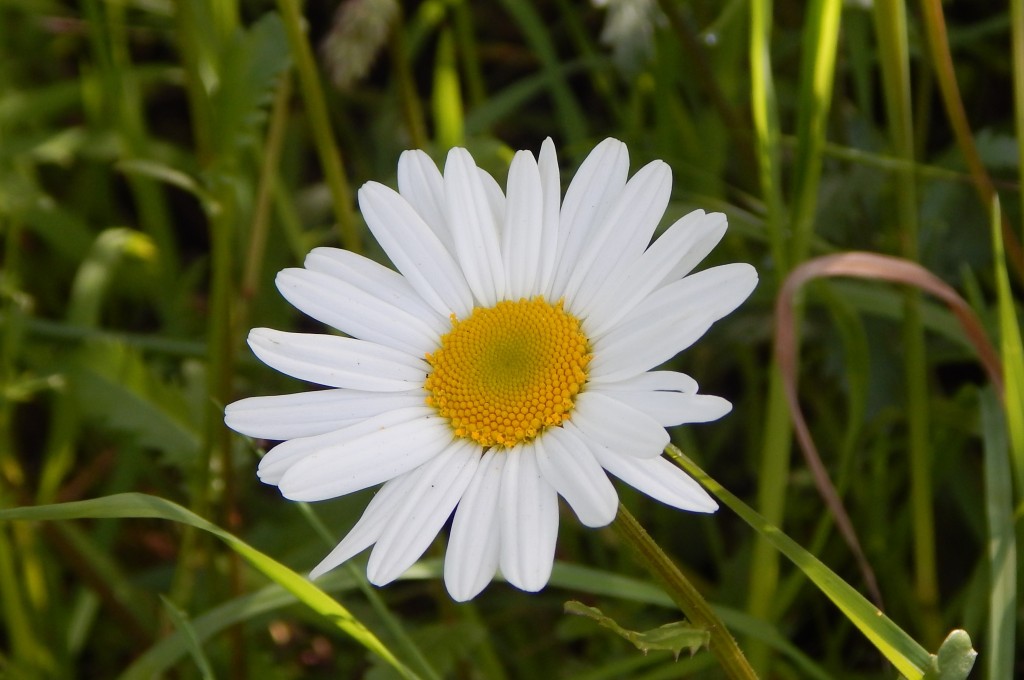
Shasta Daisies can escape and naturalize and they look just like Ox-eye Daisies but have even larger flower heads.
Habitat and use
Leucanthemum vulgare is native to Europe and part of Western Asia. It is a perennial wildflower (or weed) of grassland and scrub areas, especially open meadows and fields. It has widely naturalised in many parts of the world and can become invasive.
It can be found as a weed in lawns, where it won’t grow to its full size.
The Shasta Daisy is widely cultivated in many cultivars.
Other Notes
Daisies are fairly common. I assume that the small flower varieties are common daisies, the larger ones are Ox Eye Daisies and the largest are Shasta Daisies that have escaped and naturalized – but I could be wrong.
See also
There are many Aster species to be found in the UK, a few of which will have blog posts. The other one that most resembles daisies is [331] Michaelmas Daisy.

Pingback: [331] Symphyotrichum novi-belgii, Michaelmas Daisy | The Species of Britain